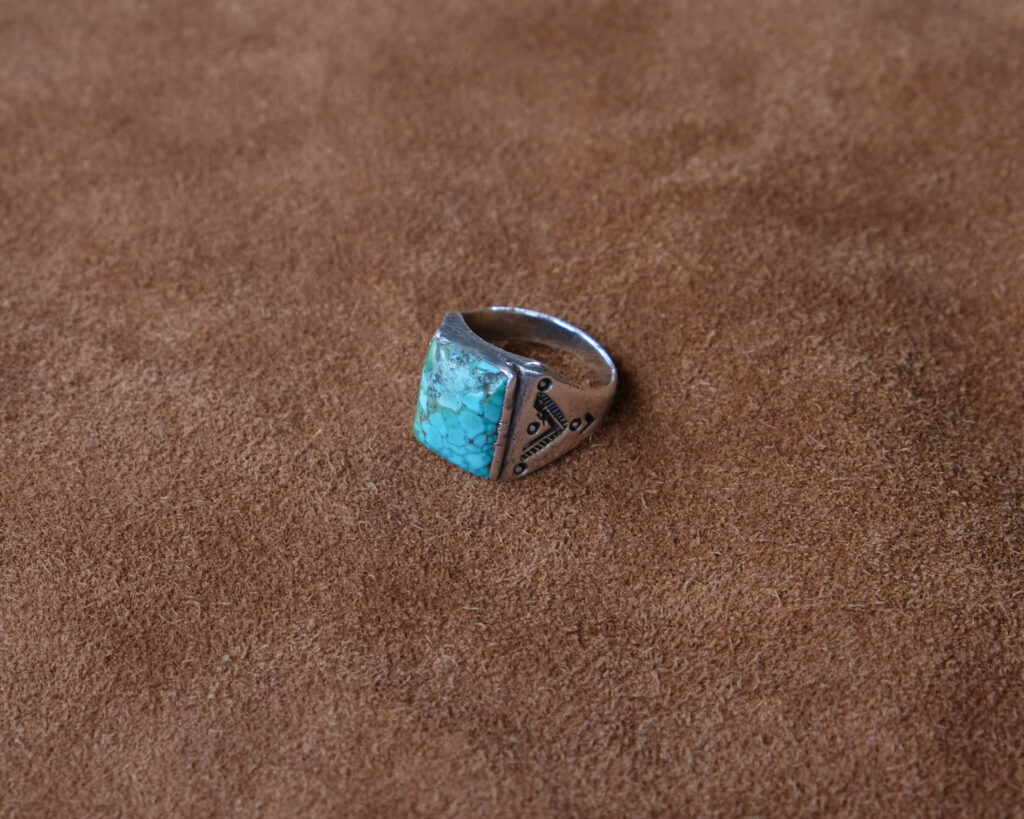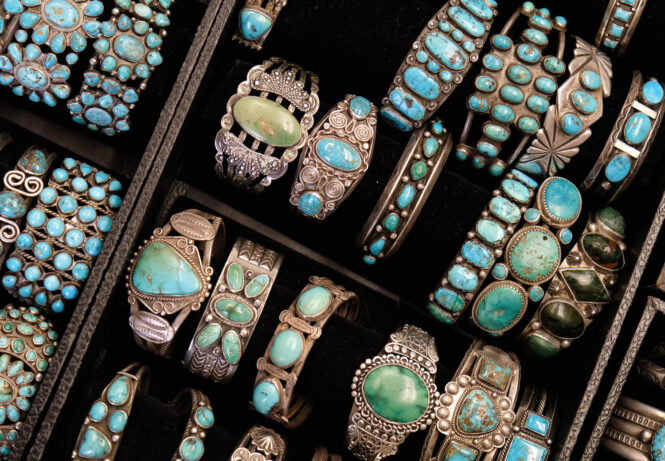There’s no denying that western-inspired fashion has been gaining momentum in recent years. Denim shirts can be seen under everything from leather jackets to navy blazers. Turquoise rings peek out from under heavy winter coats in high-end lookbooks. Even mass-produced belts are getting the yee-haw treatment; after a decade of minimalism, three-piece buckles and cowboy-themed motifs are making the rounds across many retailers.
And as with anything popular, one of the challenges in exploring these products is separating the authentic from the copycat. This isn’t to say that every purchase needs to be from a heritage brand or artisan maker, but when it comes to vintage goods in particular, I prefer to trust an expert. And while there are many places to shop for vintage and modern Native American jewelry, I have found no better source than Chipeta Trading for the vintage hunter that really wants to understand the pieces that they’re looking for.
This Santa Fe-based business is run by Don Siegel, a lifetime collector and verifiable expert in many subjects related to Native American history. Chipeta Trading is his way of sourcing “wearable art” for those that appreciate it, while also sharing the history of these cultural pieces and giving back to the community that created them. I highly recommend it as a stop in Santa Fe, though he also has some pieces available on his website. But given the breadth of both his collection and his knowledge of the topic, it’s a worthy stop for anyone else curious about Native American art and jewelry.
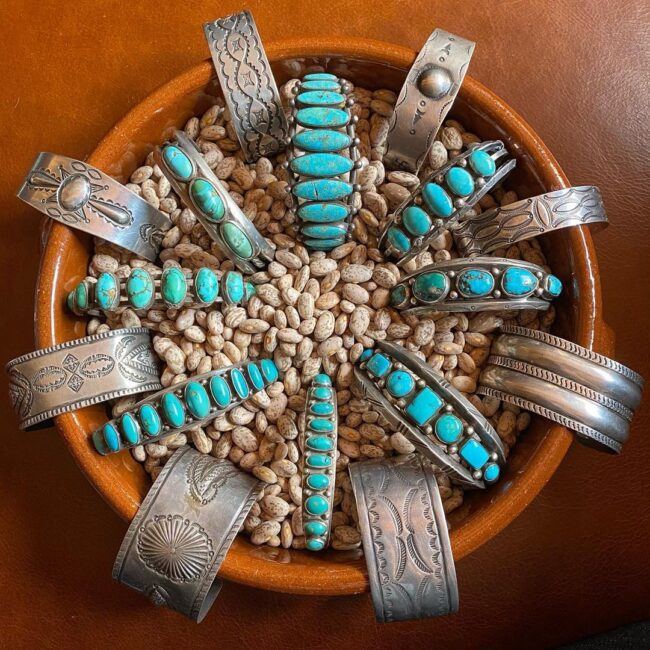
The Process, a.k.a. The Chipeta Experience
In order to view Don’s collection in person, I reached out to him directly and met with him in his studio near the historic district of Santa Fe. You are certainly able to purchase online (and Don is very responsive to inquiries), but doing so in person where possible adds quite a bit to the experience.
Don starts with a thorough history of the origins of Southwest jewelry. Much like Santa Fe itself, this history is an amalgamation of influences from Mexican, Spanish, American, and Indigenous peoples. The earliest silver jewelry was made from American silver coins and Mexican pesos that the Native Americans received in exchange for traded goods. These coins were of little use to the Native Americans, so they were melted down and made into jewelry which could then be traded back to American traders and tourists. This “historic period” of silversmithing – from roughly 1880 to 1940 – is what Don focuses on, and is where most of his collection can be dated to.
Beyond this historical context, Don also has examples of the tools that were used in the making of these pieces. You are able to visualize the process for different types of silversmithing – sandcasting, stamping, and so forth – as well as how turquoise was integrated into the jewelry.
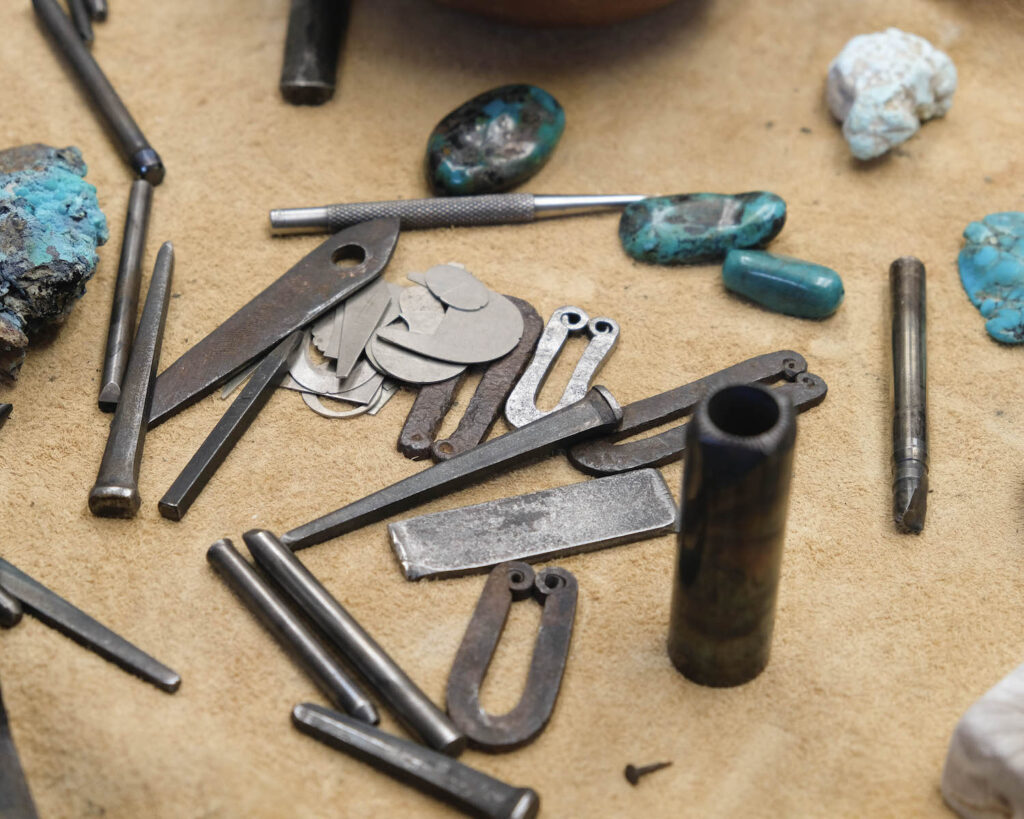
Once you’ve had an opportunity to browse the collection and decide if you’d like to take anything home, the last element of the process is a short ceremonial exchange – first a recognition of previous owners, then a cleansing and passing on to the new custodian of the piece. Don emphasizes that we are not customers, but temporary caretakers – these pieces have been circulating for decades and will continue to do so, so it is our job to take care of them until they pass to the next person.
The Collection
Don has amassed a huge assortment of museum-quality Native American jewelry through decades of collecting and his many connections with other vintage dealers. One of the ways that Don is able to get the best pieces – aside from time spent honing his own eye and skill as a collector – is the fact that he pays upfront for vintage jewelry, rather than consigning pieces from dealers. This means that other dealers and collectors are incentivized to bring Don their best pieces because they’ll get an immediate sale rather than getting a “cut” when (and if) an item sells. This is a business risk for Don, but a calculated one that allows him to have first pick of any new pieces on the market.
The selection of available pieces and styles covers a wide array of styles and categories, though I would say the cornerstone is the cuff bracelets. Varying from simple silver bands to ornate, turquoise-laden designs, the breadth of styles and high quality throughout is better than you will find anywhere else that I have looked.
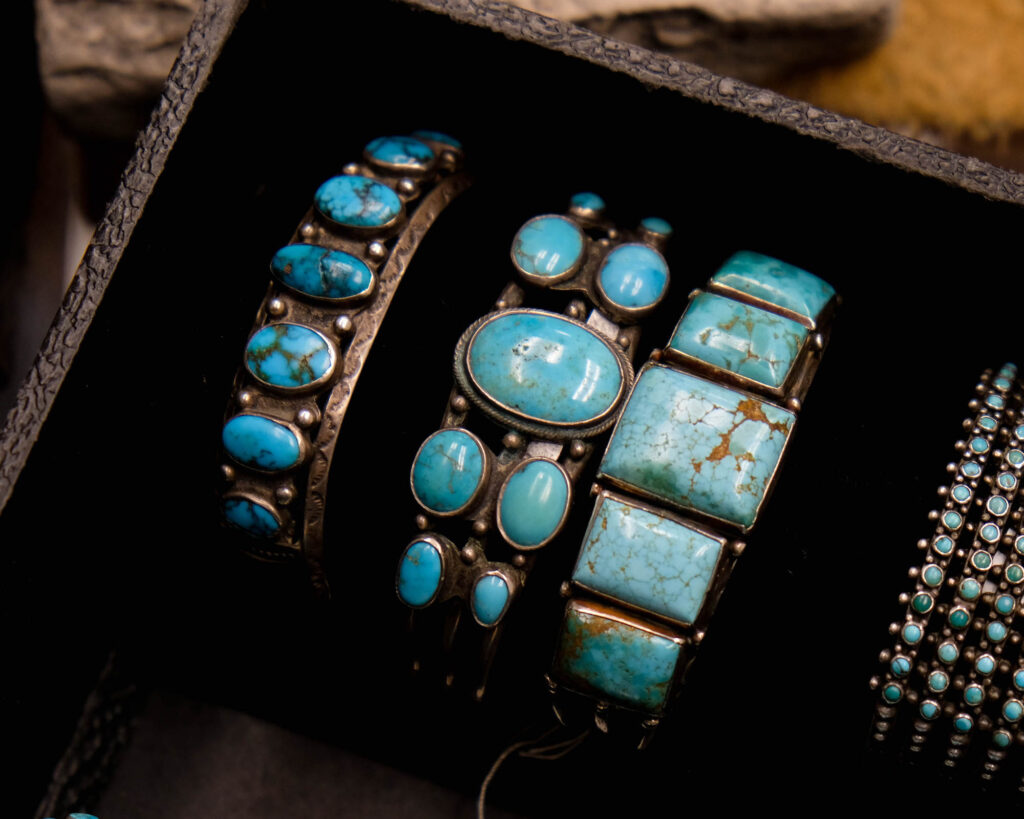
The selection of rings is equally vast, with a wide range of styles and prices (though many of these are not on Don’s website). This is where I ultimately decided to start my Chipeta journey – more info on that below. Squash blossom necklaces are very popular at the moment (and the prices are higher than the cuffs), but the pieces are stunning and worth taking a look at.
Lastly, Don has put together a selection of pieces “for the new collector” that maintain the same level of quality but are at prices that are more approachable. Some are more recent pieces (1940’s and later) while others are still historic period but more simple styles. If you’re just getting started, this is a great place to begin.
Regardless of the product type, the collection is constantly changing and not everything is shown online. Be sure to reach out to Don if you’re looking for something specific, and definitely schedule time to see the collection in person if you can.
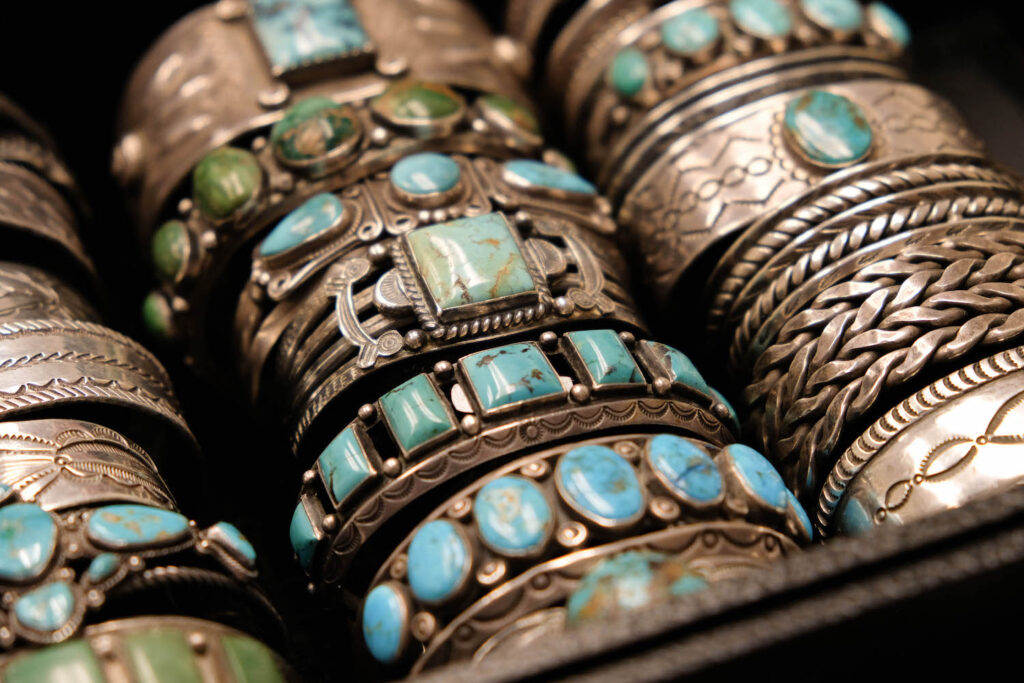
Wearing Cultural Objects
For me, part of the question around Native American jewelry was the question of “Can I pull this off?” – not only because the styles can be bold, but also because there is a cultural angle to these objects. In other words, is it ok for me to be wearing this?
As someone who could reasonably be described as “the whitest person you know,” I am sensitive to the fact that there are some objects of cultural significance that, despite how cool they are, are things that I wouldn’t feel right wearing. This isn’t something that comes up often but it is in the back of my mind when objects carry cultural weight.
I made a point to ask Don about this; how can I reconcile the fact that this is a historical and cultural object that I want to wear mostly because it looks cool, despite not being connected to that history? He had clearly come across this question before and had a simple answer – even when these objects were made (many over 100 years ago), they were made for tourists. These pieces were never intended to be weighted with cultural significance; they were souvenirs. So really, by being someone outside of the Native American experience and using these pieces as a way to explore and support it, I am doing exactly what these pieces were intended for.
And this comes back to the core part of Don’s mission with Chipeta – acknowledging and honoring the circular lifecycle to these objects. They are intended to move around this ecosystem, from person to person. By wearing pieces that come from this rich history, you are also supporting the network behind it. This is also why Don focuses on sales to Americans, even though there is significant interest from international collectors. These objects were born of this cross-pollination between cultures here, and so Don’s focus is to keep it that way.

Giving Back to the Community
In line with the idea that we are caretakers of these objects more than we are customers, Don has also changed the way his business operates so that it gives back to the ecosystem that created these historic pieces. A large part of what Don wanted to achieve with Chipeta was not only sharing knowledge but also supporting the indigenous communities behind it – and as someone with a deep knowledge of both vintage jewelry and Native American history, he is in a unique position to accomplish this.
Don now donates profits from Chipeta to Indigenous scholarships, social justice initiatives and non-profit organizations. In 2022, this was over $100,000 towards these causes. Additionally, the majority of his models are Native and Indigenous, helping to build a bridge of appreciation, respect and tradition between the various worlds. This element of Don’s business is sets it clearly apart from other vintage dealers, as Don has turned his company from simply a source for vintage finds to a network of shared knowledge and support.
My Chipeta Purchase
In keeping with how I approach pretty much all clothing, I decided to jump into this new hobby in a relatively conservative way. I had been warming up to the idea of a vintage ring, and Don had dozens to choose from. After sampling a literal handful, I decided on one of the oldest – a hefty piece from the 1920s. It has heavy signs of wear on the silver and the large turquoise stone, but this wear gives it character that couldn’t be created any other way than through decades of use through multiple generations.
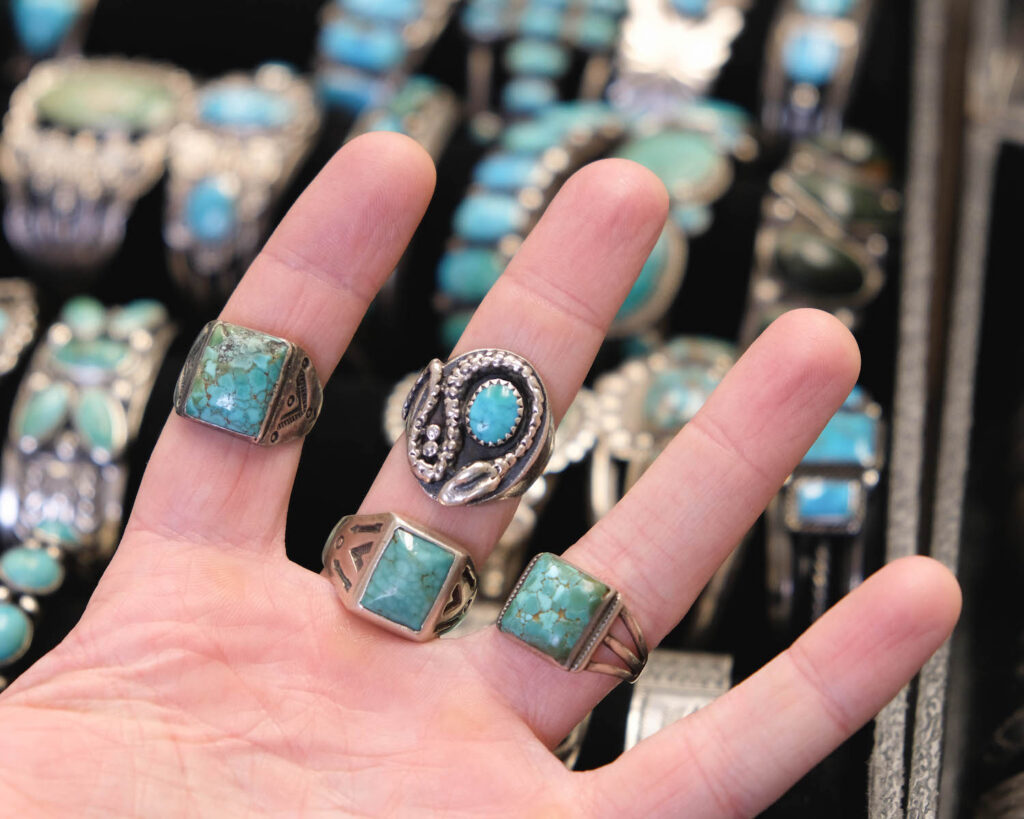
I’m generally not someone that wears rings, but I’ve found this piece to fit right in with much of the stuff that I wear. It’s quite at home with Western-wear, of course, but I reach for it whenever I have an interesting, directional look going on – from camp collars and chinos to big coats and sweaters.
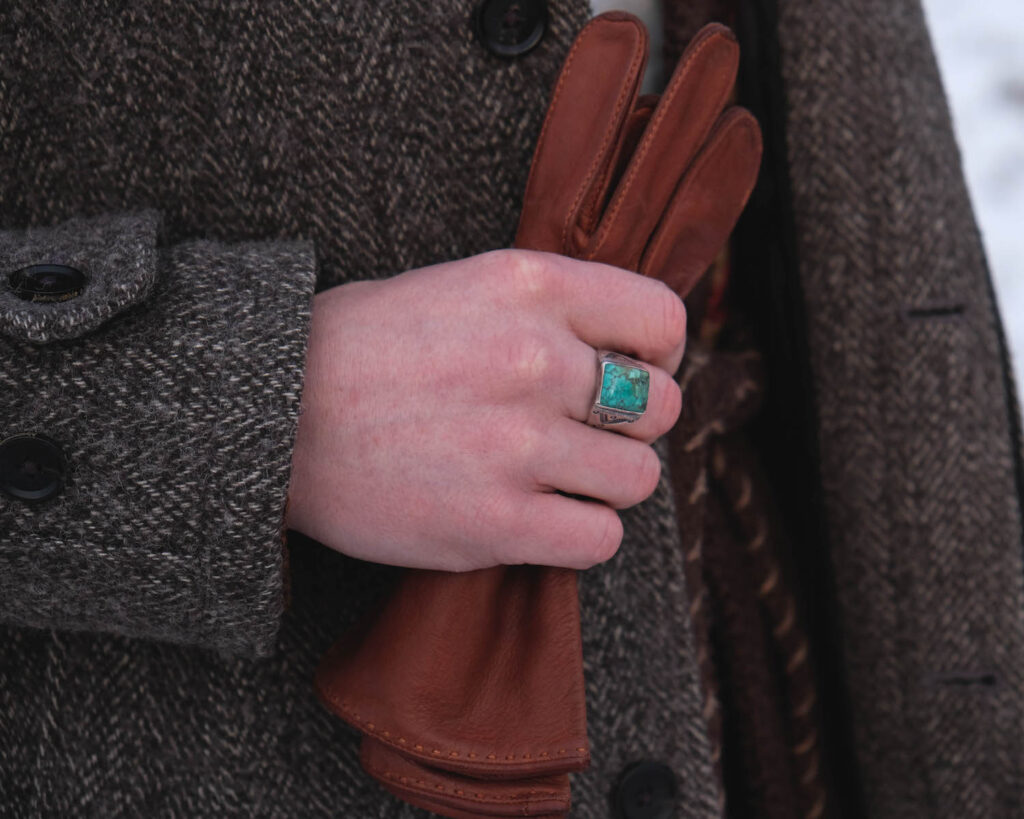
If you’re like me and have a penchant for going all-in when learning about something new, Chipeta Trading is exactly the kind of resource that you’ll inevitably end up looking for. There are great products available for purchase, to be sure, but also a wealth of knowledge and confidence that the collection is authentic. Don is also very active on Instagram and runs a blog on his site, so there are many sources online to learn more about these historic objects. There is also a satisfaction that comes from knowing that your purchase is supporting the right people, which further underscores Don’s mission. These pieces of jewelry will inevitably be passed on to future generations, so supporting the people and history behind them is equally important.
